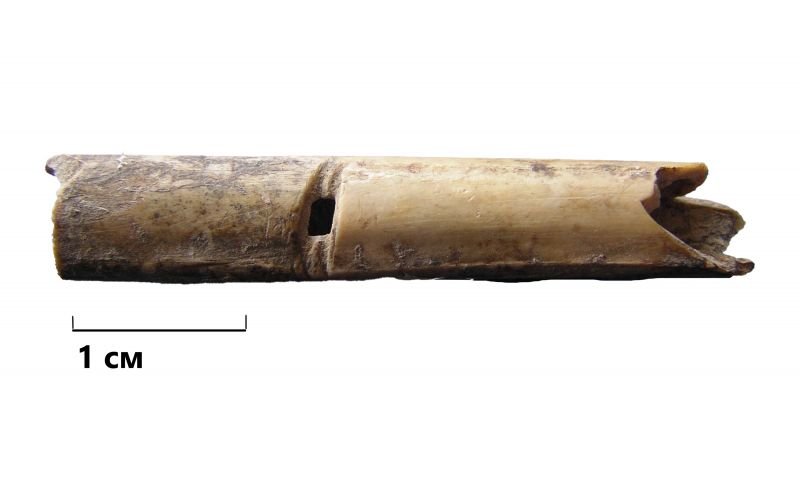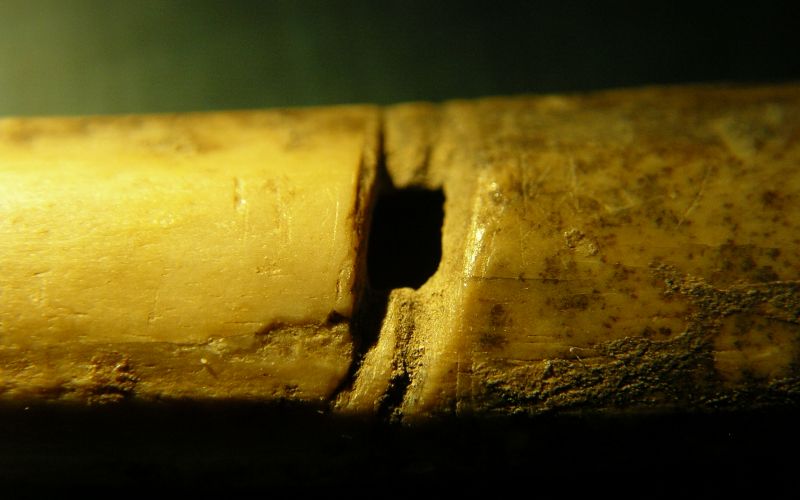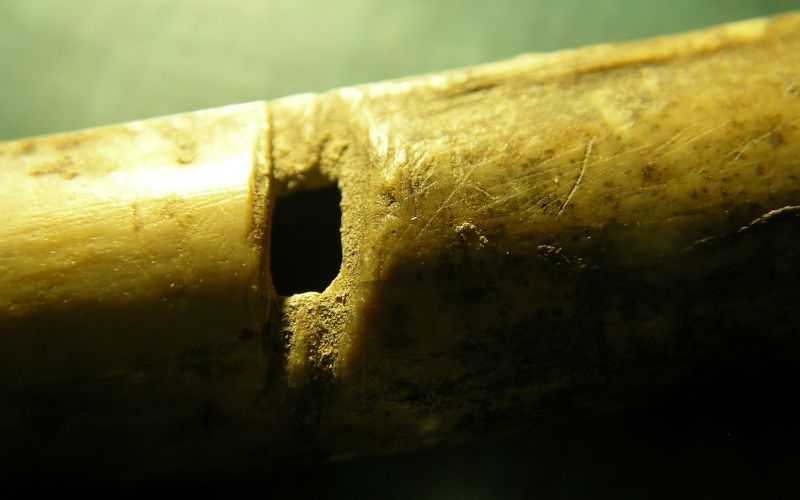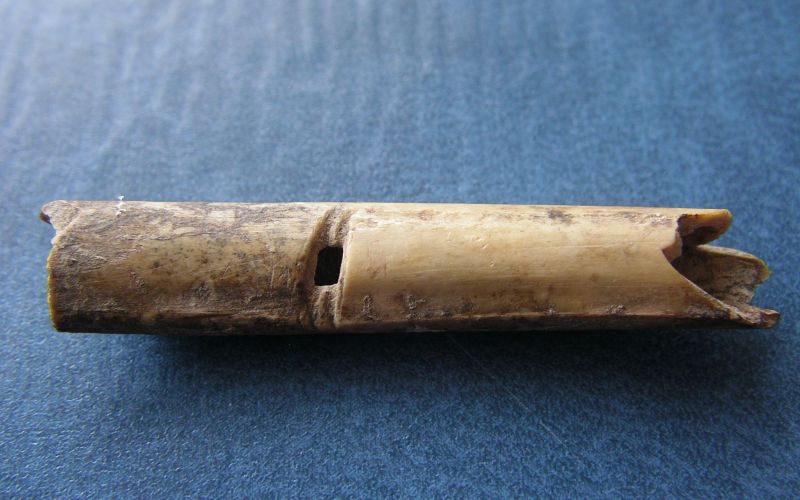Фрагмент флейты
Артефакт представляет собой фрагмент изначально более крупного изделия из слегка выгнутой кости птицы (возможно, лебедя, определение И. Мликовского). Хорошо заметны следы излома на одном конце предмета. В средней части предмета было намеренно выполнено отверстие подпрямоугольной формы.
Техника изготовления
Установлено, что рассматриваемый артефакт представляет собой только фрагмент изначально более крупного изделия, хорошо заметны следы излома. Определить изначальные метрические параметры изделия не представляется возможным.
На основе изучения следов воздействия на поверхность изделия можно сделать уверенное предположение, что образование отверстия производилось в несколько этапов. Изначально было сделано два параллельных углубления в виде каналов, углубление которых привело к прободению кости. В качестве обрабатывающего инструмента использовалась пила с возвратно-поступательным рабочим ходом. Вероятно, вслед за этим, было произведено формообразование подпрямоугольного отверстия. Использовался для этого инструмент с узким режущим рабочим краем. Последующим и завершающим этапом работы с изделием в зоне отверстия являлась развальцовка каналов пропиливания с помощью строгального ножа, следы работы которого хорошо прослеживаются. Движение обрабатывающего инструмента в данном случае являлось односторонне направленным вдоль своей длинной оси и с некоторым наклоном плоскости, предполагаемого ножа, в сторону отверстия изделия.
Следы утилизации
На поверхности изучаемого артефакта выявлены линейные микроследы, образовавшиеся вероятно от абразивных частиц. Такого рода царапины, предварительно определены как следы утилизации и не носящие формообразующий характер для изучаемого изделия. Не исключено, однако, что относительно более глубокие линейные следы на отдельных участка артефакта, могли иметь и иной генезис. Помимо перечисленных линейных следов, на поверхности изделия выявлены и следы заполировки. На первом участке поверхность кости имеет естественный, слегка «шероховатый» характер. На втором прослеживается заглаженность (заполировка) образующаяся от длительного контакта с «мягким органическим материалом», проще говоря: вероятно, от контакта с кожей рук человека. Такого же рода заглаженность наблюдается и на бортах углубления канала пропила в зоне отверстия на изделии.
Место хранения
Музей БНЦ СО РАНИнвентарный номер
Музей БНЦ 142Размеры
Длина - 46,64 мм
Ширина (в среденм) - 8,26 мм
Толщина (в среденм) - 6,33 мм
Материал
кость (лебедь-?)Датировка
35 000 - 38 000 л.н.Культура
ранний этап верхнего палеолитаАвтор раскопок
Лбова Л.В.2000
Публикации
Лбова Л. В. Палеолит северной зоны Западного Забайкалья. – Улан-Удэ: Изд-во БНЦ СО РАН, 2000. – 240 с.
Лбова Л.В., Кожевникова Д.В. Формы знакового поведения в палеолите: музыкальная деятельность и фоноинструменты. – Новосибирск, РИНЦ НГУ, 2016
Лбова Л. В. Волков П.В., Кожевникова Д. В. Свидетельства древнейших музыкальных традиций в археологии Сибири (начальная стадия верхнего палеолита) // Вестник Новосибирского государственного университета. Серия: История, филология. – 2010. – Т. 9, вып. 5: Археология и этнография. – С. 124–131.



